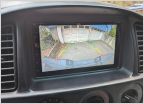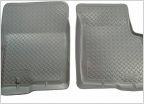-
Welcome to Tundras.com!
You are currently viewing as a guest! To get full-access, you need to register for a FREE account.
As a registered member, you’ll be able to:- Participate in all Tundra discussion topics
- Transfer over your build thread from a different forum to this one
- Communicate privately with other Tundra owners from around the world
- Post your own photos in our Members Gallery
- Access all special features of the site
House Battery Set up - Brief Explanation
Discussion in '1st Gen Tundras (2000-2006)' started by wtrbrdm, Mar 9, 2025.


 Normal brakes are possible!
Normal brakes are possible! Stupid speaker wiring question (00 AC w/amp)
Stupid speaker wiring question (00 AC w/amp) Can't Find 2004 Fog Light Switch
Can't Find 2004 Fog Light Switch Bleeding master cylinder?
Bleeding master cylinder? Which mats?
Which mats?










































































